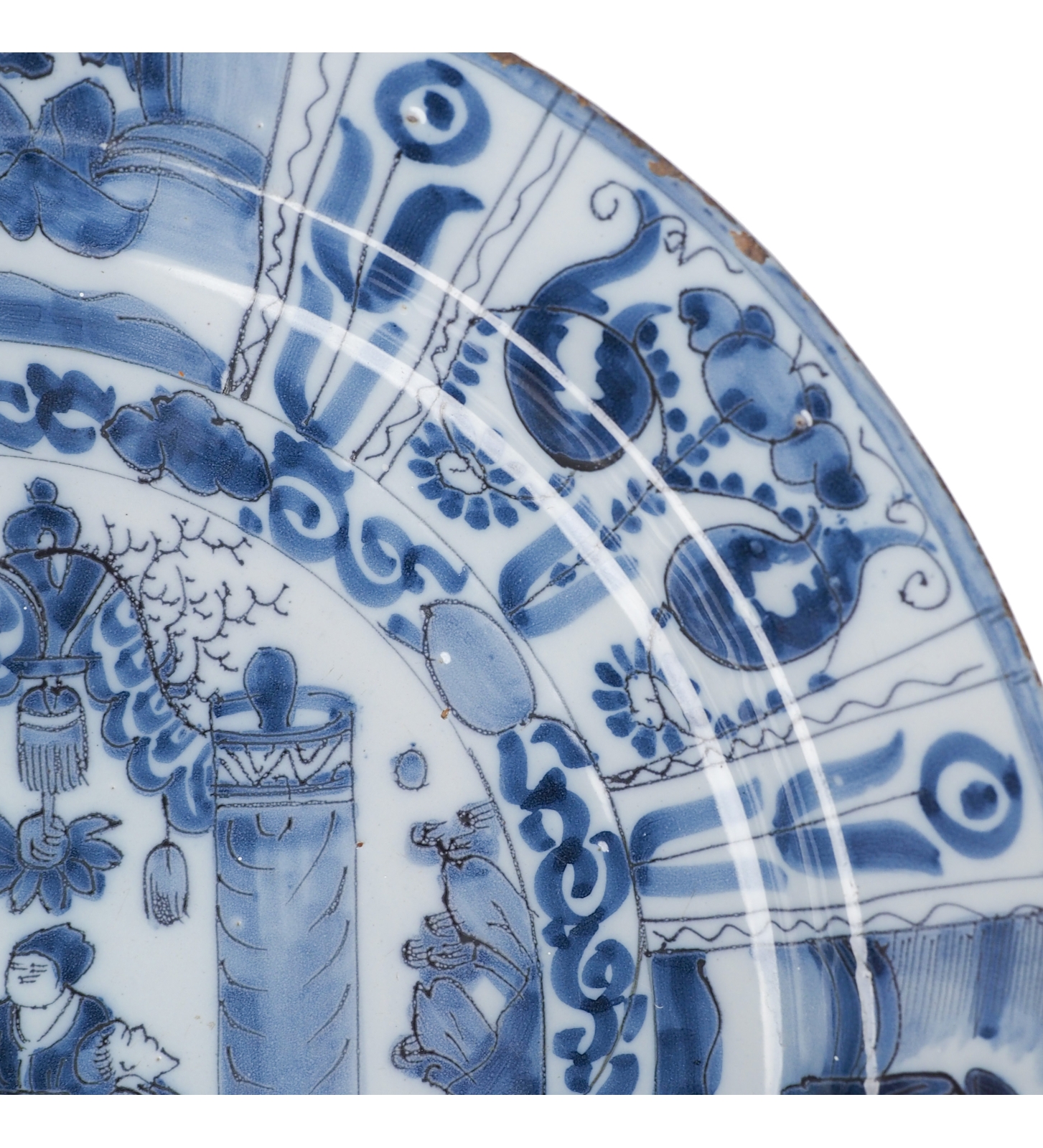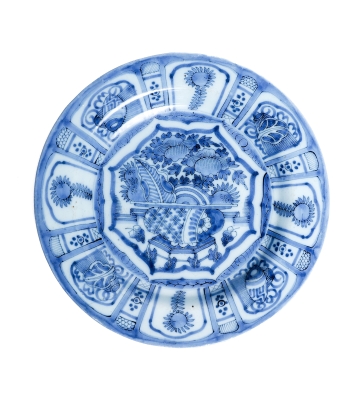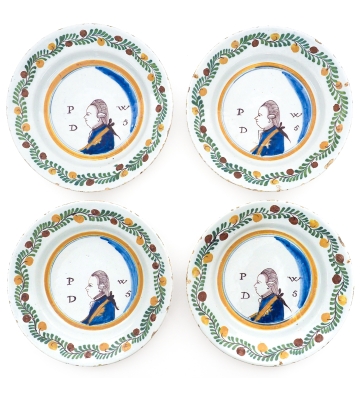Decorated in different shades of blue on a white tin glaze in Chinese Transitional style with four seated figures in a garden landscape near a shore. They are located between the pillars of a tempel (or arbor). Flower scrolls replace the diaper motif as a border around the centre medallion. On the sides and rim eight large and eight narrow panels. The decoration of this Dutch earthenware plates is a copy of the Chinese porcelain made under the last Ming emperor Shunzi (1644-1661). This is also called 'Transition' porcelain and can be categorized as kraak-style porcelain in the transitional period (1621-1661). Nevertheless, this plate is made in Holland around 1680-1700.
The border has divisions with a tulip flower in between. It was thought that this tulip pattern was inspired by the famous Dutch tulip mania. Actually, it is most likely that te tulip is inspired of Iran. On the reverse there is a decoration with eight circles, inspired by the Dutch Wanli style, which was still present in the transitional period. Chinese craftsmen were using cobalt out of Iran for the decoration of high quality or imperial porcelain
Typical for this early period Delftware is the grey-blue color of the plate with dark outlines and a variety of dark and lighter filling of the surfaces. This plate has a very vivid and deep blue tint.


























